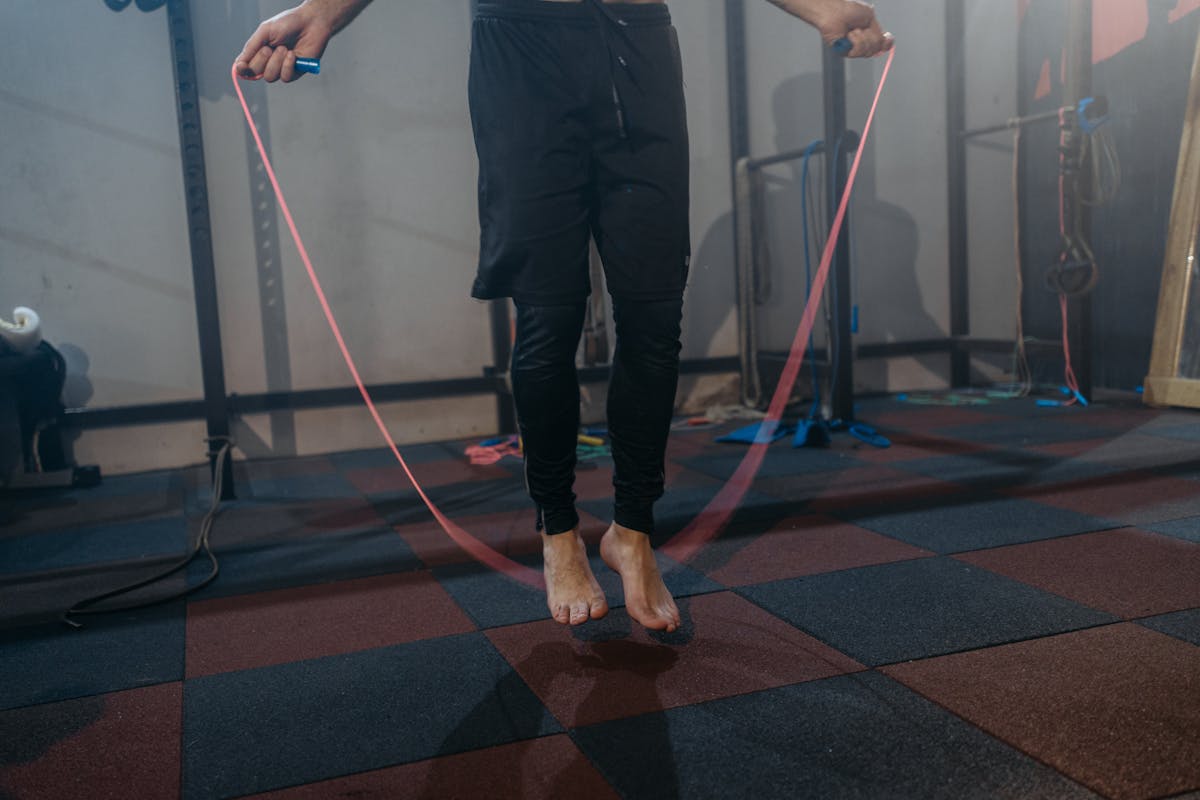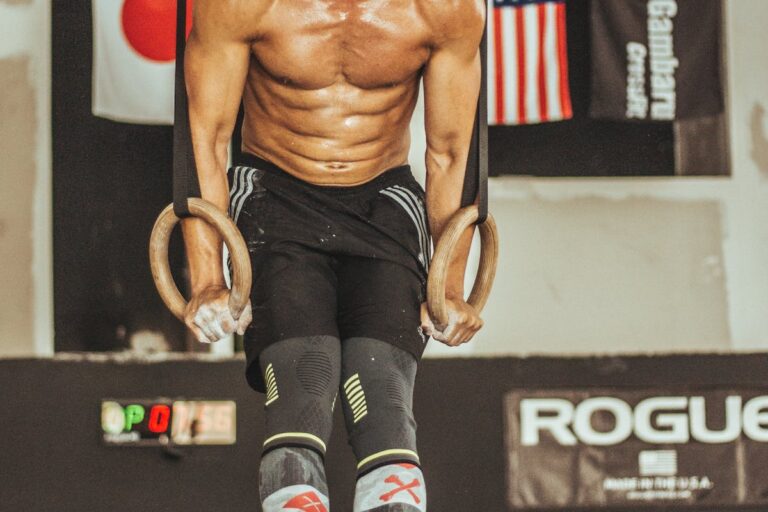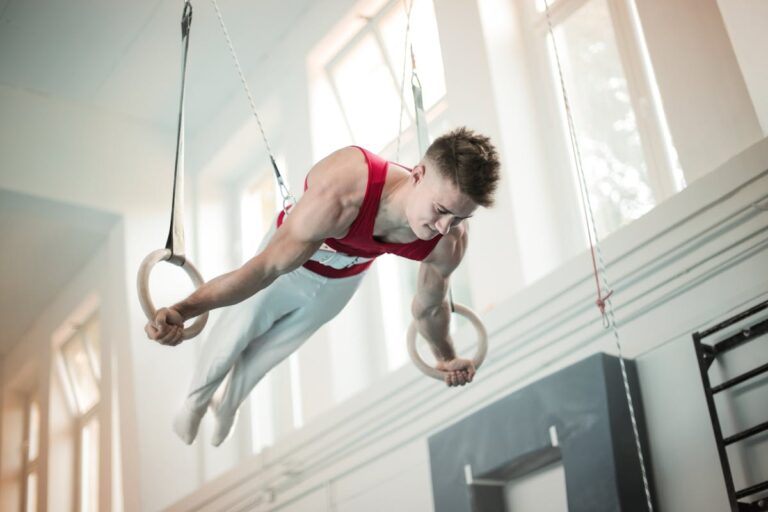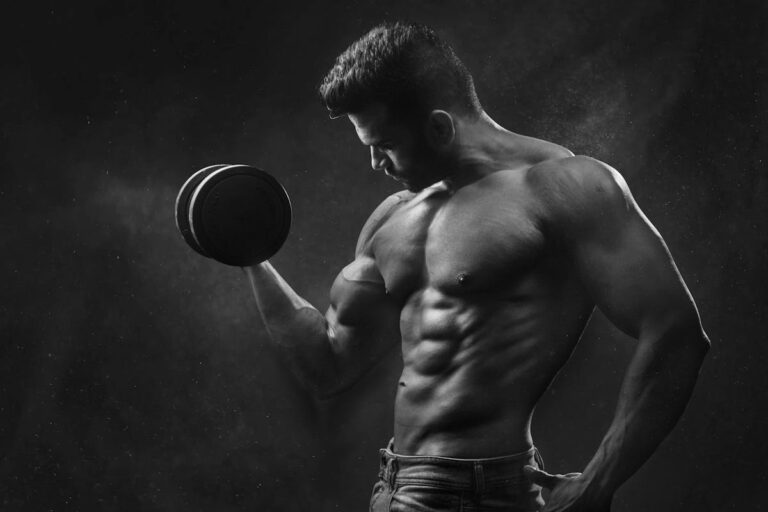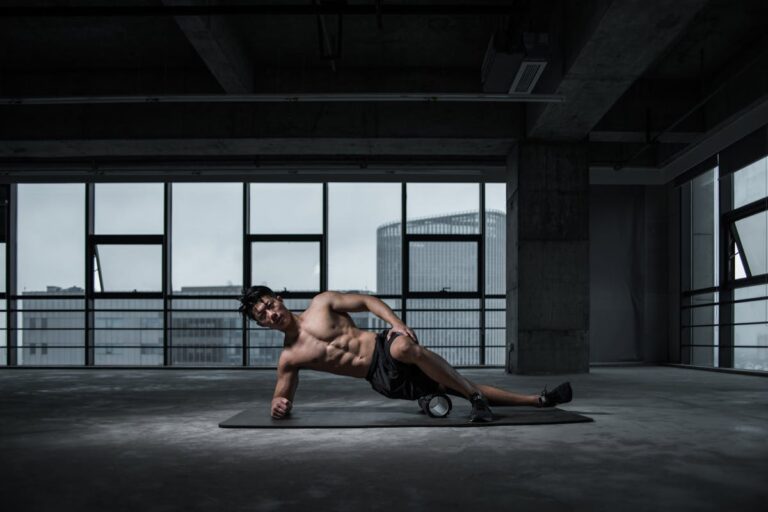30-Day Calisthenics Workout Plan for Beginners
Transform your body with our comprehensive 30-day calisthenics workout plan for beginners. Get stronger, leaner, and more flexible using just your bodyweight at home
Table of Contents
Start your journey to natural fitness with our 30-Day Calisthenics Workout Plan for Beginners. Calisthenics uses your body weight as resistance. It’s a great way to get fit without expensive gym memberships or heavy equipment. This plan helps you build strength, improve mobility, and reach your fitness goals from home.
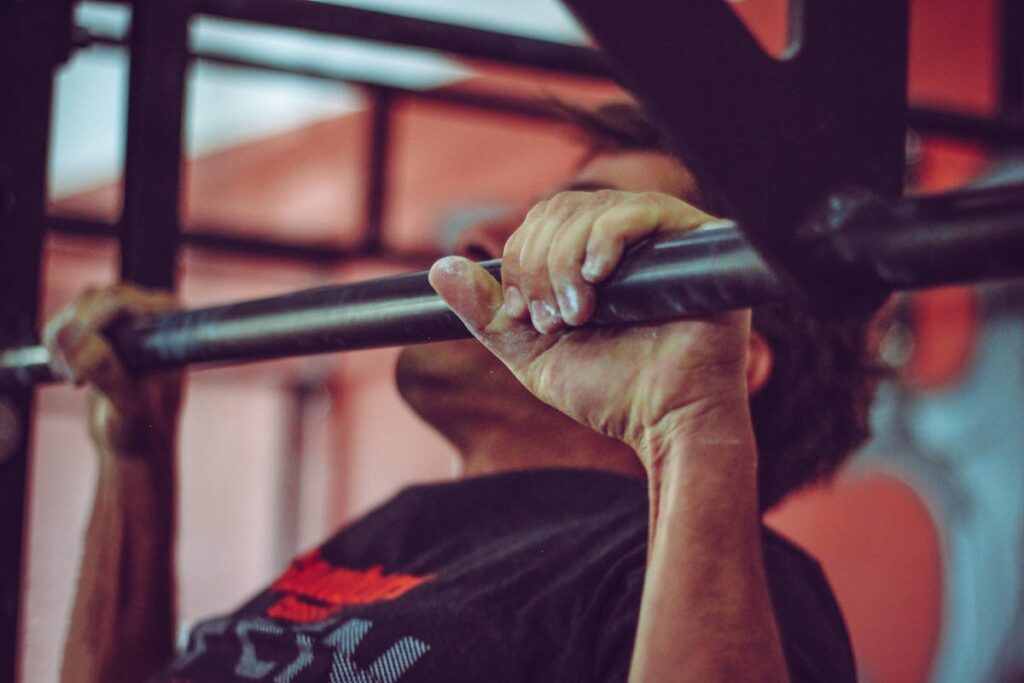
Key Takeaways
- Discover the power of bodyweight exercises to build strength and transform your body
- Learn how to perform a wide range of calisthenics movements with proper form and technique
- Develop a well-rounded fitness routine that targets your upper body, lower body, and core
- Implement a progressive overload strategy to challenge yourself and see continuous progress
- Understand the importance of proper nutrition and recovery to support your calisthenics journey
- Track your progress and set realistic goals to stay motivated and achieve your fitness aspirations
- Enjoy the convenience and versatility of a no-equipment workout routine that can be performed anywhere
Understanding Calisthenics: Your Gateway to Natural Fitness
Calisthenics is a form of bodyweight training that’s become very popular. It’s a great way to build muscle, get stronger, and stay fit naturally. Unlike gym workouts, calisthenics uses your body weight as resistance. This makes it a challenging and versatile way to work out at home.
Benefits of Bodyweight Training
Calisthenics is great for both beginners and those who already work out. It helps you build muscle without weights by working out many muscles at once. It also boosts your strength and endurance, making you more physically capable.
Science Behind Calisthenics
Calisthenics is backed by science. Studies show it has many benefits for your body and mind. It works out many muscle fibers, improves joint stability, and helps your body adapt to challenges. Plus, it improves your focus and overall well-being.
Why Choose Calisthenics Over Gym Workouts
Calisthenics has many advantages over gym workouts. It doesn’t need much equipment, making it easy to do at home. This flexibility lets you stay fit without gym memberships or special gear. It also helps you develop better movement patterns and a more holistic fitness approach.

Essential Equipment and Space Requirements for Home Workouts
Starting a no-equipment workout or home workout program is easy. You don’t need fancy gear. Calisthenics, using your body weight as resistance, is effective and can be done at home.
To create a good workout space, you need a clear area to move. This could be a spare bedroom, living room, or outdoor patio. Make sure it’s clutter-free and has a solid, even surface.
For calisthenics, you only need a few basic items. Here’s what you’ll need:
- Yoga mat or exercise mat: Gives cushioning and grip for your exercises.
- Sturdy chair or bench: Useful for dips, step-ups, and more.
- Resistance bands (optional): Increase workout challenge and target muscles.
- Pull-up bar (optional): For pull-ups and upper-body exercises.
A no-equipment workout or home workout program is convenient and affordable. You can get a full-body workout without a gym or expensive gear. All you need is space and the will to improve your fitness.
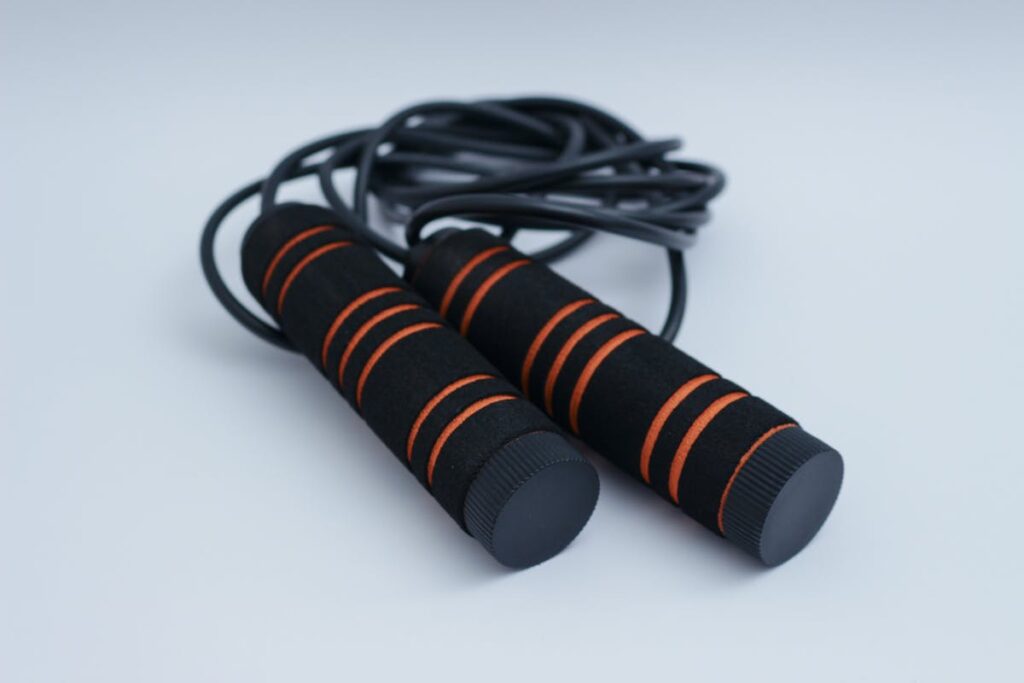
Fundamental Bodyweight Exercises for Beginners
Starting your calisthenics journey means learning the basic exercises. These exercises work on different muscle groups. They help you build a strong, full-body workout routine. Let’s look at the key upper body, lower body, and core exercises to build a solid fitness base.
Upper Body Movements
Push-ups are a classic exercise that works your chest, shoulders, and triceps. Start with modified push-ups on your knees and move to full push-ups as you get stronger. Pull-ups and chin-ups are great for your upper back and biceps. If you’re new, use a resistance band or a pull-up assist machine to help.
Lower Body Exercises
Squats and lunges are key for strong legs and balance. Do bodyweight squats with focus on form and depth. Add forward and reverse lunges to work your legs and glutes. Calf raises are also important for strong calves.
Core Strengthening Basics
A strong core is essential for all calisthenics. Planks, both standard and side, are great for core stability. Hollow holds and leg raises will strengthen your midsection.
Start with a number of reps you can handle and increase as you get stronger. Consistency and proper form are crucial for getting the most out of these exercises.
| Exercise | Target Muscles | Beginner Variation | Advanced Variation |
|---|---|---|---|
| Push-ups | Chest, Shoulders, Triceps | Modified Push-ups (on knees) | Diamond Push-ups |
| Pull-ups/Chin-ups | Back, Biceps | Assisted Pull-ups (with resistance band) | Weighted Pull-ups |
| Squats | Quadriceps, Hamstrings, Glutes | Bodyweight Squats | Pistol Squats |
| Lunges | Quadriceps, Hamstrings, Glutes | Forward and Reverse Lunges | Walking Lunges |
| Planks | Core | Standard Plank | Side Planks |
Add these basic bodyweight exercises to your full-body training to boost strength and endurance. Focus on proper form and progress for safe and effective workouts.
30-Day Calisthenics Workout Plan for Beginners
Start your fitness journey with this 30-day calisthenics workout plan for beginners. Calisthenics uses your bodyweight to build strength and muscle. It’s a great way to reach your fitness goals without expensive gym equipment.
This 30-day plan will take you through a series of exercises. You’ll build strength and endurance gradually. It’s perfect for those new to fitness or looking to change their routine. You’ll get a well-rounded physique and better health.
Your Daily Workout Schedule
| Day | Workout | Rest |
|---|---|---|
| 1-5 | Full-body Calisthenics Routine | Rest Day |
| 6-10 | Upper Body Focused Routine | Rest Day |
| 11-15 | Lower Body Focused Routine | Rest Day |
| 16-20 | Core and Stability Focused Routine | Rest Day |
| 21-25 | Full-body Calisthenics Routine | Rest Day |
| 26-30 | Comprehensive Calisthenics Workout | Rest Day |
Listen to your body and adjust your workouts as needed. Stick to the plan and increase the challenge as you get stronger. Consistency is key.
By following this 30-day plan, you’ll build a strong and toned body. You’ll also gain mental resilience and discipline for a healthy lifestyle. Enjoy the journey, celebrate your progress, and see the power of bodyweight training.
Proper Form and Technique Guidelines
When you want to get fit with calisthenics and improve strength and endurance, it’s key to focus on form and technique. Learning the basics of bodyweight exercises is important. It helps you do exercises safely and get the most out of your workouts.
Common Form Mistakes to Avoid
Doing exercises wrong can make them less effective and riskier. Here are some common mistakes to avoid:
- Arched or rounded back during push-ups and pull-ups
- Excessive momentum or swinging during exercises like dips and rows
- Locking out the joints at the top of the movement
- Improper hand, foot, or body positioning
Safety Precautions
Even though calisthenics seems simple, safety is crucial. Here are some safety tips:
- Start with bodyweight-only exercises and gradually increase difficulty
- Warm up thoroughly to prepare your muscles and joints
- Listen to your body and stop if you experience pain or discomfort
- Ensure you have adequate space and stability for each exercise
Video Tutorial References
For visual guidance on proper form and technique, check out these helpful video tutorials:
- Perfect Push-Up Technique
- How to Do Flawless Pull-Ups
- Mastering the Bodyweight Squat
“Proper form is the foundation of any effective workout routine, and calisthenics is no exception. Take the time to learn and practice the correct techniques for maximum results and injury prevention.”
Progressive Overload in Bodyweight Training
Starting your calisthenics journey means focusing on building muscle without weights and boosting strength and endurance. The key is progressive overload. This idea is crucial for making steady gains and a solid bodyweight workout routine.
Progressive overload means slowly increasing the challenge to your muscles. This way, you can grow your muscles, get stronger, and get fitter. In calisthenics, you can use different methods to keep pushing yourself and growing.
- Increase the number of repetitions: Start with a manageable number of reps for each exercise, and gradually work your way up as your strength improves.
- Add more sets: Expand the volume of your workouts by increasing the number of sets per exercise.
- Elevate exercise difficulty: Transition to more challenging variations of your bodyweight exercises, such as moving from push-ups to diamond push-ups or from squats to pistol squats.
- Incorporate weighted calisthenics: Introduce light weights, such as a backpack or a weight vest, to increase the resistance and challenge your muscles further.
Using these strategies, you can build muscle without weights and keep getting stronger and more endurance. Remember, it’s all about being consistent and patient. Your body will get used to the new challenges, and you’ll see amazing changes.
| Exercise | Beginner Level | Intermediate Level | Advanced Level |
|---|---|---|---|
| Push-ups | 3 sets of 10 reps | 4 sets of 15 reps | 5 sets of 20 reps |
| Squats | 3 sets of 12 reps | 4 sets of 15 reps | 5 sets of 20 reps |
| Lunges | 2 sets of 10 reps per leg | 3 sets of 12 reps per leg | 4 sets of 15 reps per leg |
“The only way to grow is to challenge yourself. Embrace progressive overload, and watch your strength and endurance soar.”
Nutrition Guidelines to Support Your Calisthenics Journey
Starting a get fit with calisthenics journey is more than just training. Eating right is key to fueling your body, helping it recover, and reaching your fitness goals. As a beginner fitness routine, let’s look at important nutrition tips to boost your calisthenics journey.
Meal Timing Around Workouts
Timing your meals right can help your body get the nutrients it needs. Eat a balanced meal with protein, carbs, and healthy fats 1-2 hours before working out. This gives you energy for your session. After, eat a meal or snack within 30-60 minutes to help your muscles recover.
Hydration Requirements
Staying hydrated is crucial, especially when you’re get fit with calisthenics. Drink water all day, aiming for 8 cups (64 ounces). Drink more on days you do intense beginner fitness routine to replace lost fluids.
Supplement Recommendations
While a diet rich in whole foods is best, some supplements can help. Whey or plant-based protein powder can meet your protein needs. Creatine and beta-alanine can also boost your workout performance and endurance.
| Supplement | Benefits | Dosage Recommendations |
|---|---|---|
| Whey Protein | Supports muscle growth and recovery | 20-30 grams per serving, 1-2 times daily |
| Creatine | Improves strength and power output | 5 grams per day |
| Beta-Alanine | Enhances muscular endurance | 2-5 grams per day |
Always talk to a healthcare professional before starting new supplements. This ensures they’re right for you and your health goals.
Tracking Progress and Setting Realistic Goals
Starting your calisthenics journey is a thrilling step towards a healthier lifestyle. It’s key to track your progress and set achievable goals. This way, you can stay motivated and see real results.
First, find out where you stand now. Note how many push-ups, squats, or pull-ups you can do. Also, track how long you can hold a plank. This gives you a baseline to measure your growth over time.
Keep a record of your progress in a journal or app. Celebrate each small win as you get better at each exercise. This will keep you motivated and encouraged.
When setting goals, aim for specific, measurable, and achievable targets. Maybe you want to do more reps or master a new skill. Make sure your goals are realistic and adjust them if needed.
Don’t compare yourself to others or set goals that are too high. This can lead to frustration. Focus on your own journey and celebrate every step forward, no matter how small.
FAQ
What is a calisthenics workout, and how is it different from traditional gym workouts?
Calisthenics is a way to train using your body as weight. It’s different from gym workouts because you don’t need any equipment. This makes it easy to do at home.
What are the benefits of a calisthenics workout routine?
Calisthenics helps you get stronger, build muscle, and improve flexibility. It’s great for beginners because it doesn’t cost a lot or require special equipment.
What type of space and equipment do I need for a calisthenics workout at home?
You don’t need much space or equipment for calisthenics. Just a clear area at home will do. You might need a chair or table for some moves.
What are the fundamental bodyweight exercises I should start with as a beginner?
Start with pushups, squats, lunges, and pull-ups. Also, do dips and core exercises like planks. These exercises work out all the big muscles.
How do I structure a 30-day calisthenics workout plan for beginners?
A 30-day plan for beginners should mix upper body, lower body, and core exercises. Do these 3-4 times a week, with rest days in between. The plan should get harder as you go to keep challenging you.
What are some common form mistakes to avoid in calisthenics, and how can I ensure proper technique?
Avoid mistakes like arched backs in pushups and wrong squat forms. Pay attention to your form and start with easier versions. Watch videos from experts to learn right.
How do I incorporate progressive overload into my calisthenics workout routine?
To keep getting better, add more reps or hold exercises longer. Try harder versions of exercises. This is how you build strength and muscle without weights.
What nutrition guidelines should I follow to support my calisthenics training?
Eat a balanced diet with protein, carbs, and healthy fats. Eat meals and snacks around your workouts. Stay hydrated and consider supplements to help with recovery and performance.
How can I track my progress and set realistic goals for my calisthenics workout plan?
Keep track of your progress to stay motivated. Watch your reps, hold times, and exercise levels. Set small, achievable goals to challenge yourself and celebrate your wins.
